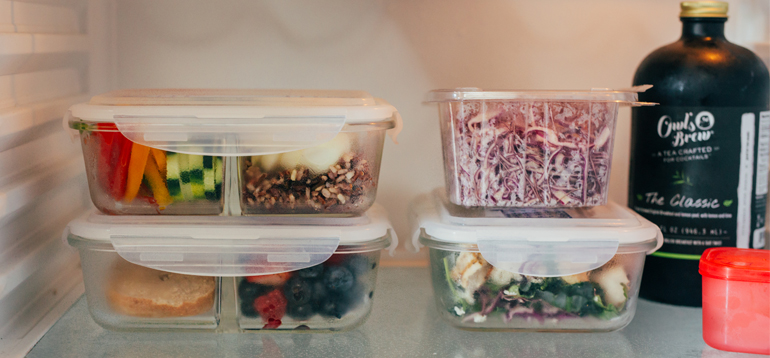The Best Strategies to Help You Lose Weight

The Ultimate Beachbody Guide to Weight Loss
Can’t Lose Weight? | How to Start | Make It Easier | What to Eat |
Weight-Loss Workouts | Maintain My Weight
When you first make the commitment to lose weight, you’ve probably got motivation to spare: You hit the gym hard. Your nutrition is on point.
You’ve got your eyes on the prize and you’re ready to do whatever it takes to see results. If that drive could last forever, losing weight would be easy.
Then life happens, and suddenly you’ve skipped your workouts 3 days in a row and there’s nothing healthy in the fridge and you’re fresh out of willpower.
So… now what?
When motivation inevitably wears off, you need a game plan in place — not a vague goal like “start working out” or “eat healthier,” but a set of solid strategies that will help you stay on track when sheer willpower isn’t really cutting it.
It’s not enough to know what you need to do — you also need to know exactly how you’re going to make it happen.
How will you squeeze in enough exercise, even when your life gets hectic? How will you improve your eating habits, even when a tray of cookies is calling your name?
Here are a few simple — and specific! — strategies that can help you exercise more, eat healthier, and set yourself up for weight-loss success.
3 Ways to Exercise More
1. Schedule your workouts.
Chances are you don’t feel like you have a ton of free time to spare — so if you vow to work out “when you have time,” your workouts will probably be pretty sporadic.
“When you don’t have a time slot carved out for fitness, it’s all too easy for that time to quickly be eaten up by other obligations,” says Candace Seti, PsyD, licensed clinical psychologist, certified personal trainer, and nutrition coach.
Instead, schedule workouts on your calendar before it starts to fill up, and hold yourself to it — if you wouldn’t ditch a dentist appointment, don’t ditch a workout.
2. Make exercise more fun.

Hate the treadmill? Don’t run on the treadmill. If you dread your workout, Seti says, it’s way too tempting to blow it off.
“We stick with an exercise program best when it’s also something we enjoy,” she says.
So find something that’s actually fun for you — try a dance workout, join a local rec-league team, or challenge your friends to a step-count competition.
3. Get more activity all day long.
You can torch a lot of calories in a 30-minute workout, but that shouldn’t be your only activity for the day.
Seti suggests the following tips for sneaking in extra movement throughout the day:
- Take phone calls while standing or pacing.
- While watching TV, stretch or walk around your couch during commercial breaks.
- Take regular water breaks at work.
- Put music on and dance while you’re washing dishes or doing laundry.
- If you’re at a computer all day, consider getting a stand-up desk. While there’s no resounding evidence that standing desks can enhance health benefits, one small study revealed that office workers who stood while working for 3 hours burned 174 more calories than those who sat.
- Bike to work once or twice a week, if possible.
3 Tips to Stick to a Healthy Eating Plan
1. Practice mindful eating.
Mindful eating helps you curb those habits that can make you rack up calories you don’t need — like snacking in front of the computer, nibbling at your kids’ half-eaten lunches, or hitting the bottom of the popcorn bag while watching TV.
One easy strategy for mindful eating: sloooow dooown.
“Take your time, chew your food thoroughly, and put your fork down between bites,” Dr. Seti says. “This will help you enjoy your meal more and feel truly nourished and satiated.”
2. Quit the Clean-Plate Club.
When you clean your plate, you’re relying on visual cues — not your own hunger and fullness signals — to tell you when to stop eating.
“Instead of recognizing triggers of fullness, we only focus on empty plates,” says Jared Heathman, M.D., a psychiatrist in Houston.
Meanwhile our plates and portions keep getting bigger.
Using smaller plates and measuring out proper portion sizes can help you kick the clean-plate habit.
3. Plan your meals in advance.

If a bad day at work makes you want to devour a plate of disco fries, then you know all too well how emotional eating can mess with your weight-loss plans.
Instead of giving in, arm yourself with a few stress-busting strategies that don’t involve food.
“Develop a list of ways to de-stress — like listening to music, running, lifting weights, meditating, or socializing,” Heathman says.
2 Strategies to Boost Your Odds of Weight-Loss Success
1. Keep yourself accountable.
When you’re short on willpower, accountability can give you the extra push you need to stay on track. Here are a few easy ways to stay accountable:
- Enlist a workout buddy. You’re more likely to stick to a weight-loss program if you have social support — after all, it’s hard to slack off when someone is counting on you. “Having an exercise partner can help you keep each other on a healthy path,” Heathman says. If you can’t find a workout buddy in your area, join an online challenge group — virtual fit-buddies are fine as long as they’ll nudge you when you need it.
- Share your weight-loss journey on social media. Don’t apologize for posting workout selfies or food pics. Science has your back here — research shows that support from an online community can play a role in helping you lose weight. The more people cheering you on, the better.
- Keep a bullet journal. You can use a bullet journal to log your meals, plan your workouts for the week, scribble down inspiring mantras, set long-term goals, or pretty much anything else that’ll keep you inspired. Bonus: Studies show that keeping a journal can boost your enthusiasm and help you stay focused.
- Download a fitness app. There’s an app for pretty much everything, from counting calories to planning your weekly grocery list to tracking your workouts. Turn your app notifications on and you’ll get helpful reminders (like, nonstop) to keep you plugging away at your goals.
2. Get more sleep.
When you don’t get enough sleep, it can be harder to lose weight.
Lack of sleep lowers your metabolic rate and boosts your appetite — and are you really going to power through a high-energy workout when you can barely keep your eyes open?
Sleep is a critical piece of the weight-loss puzzle, so you should plan your z’s just like you’d plan your meals and your workouts.
Here are a few simple ways to make sure you’re getting enough every night:
- Turn off your screens an hour before bedtime — the blue light they emit can interfere with melatonin production and keep you awake.
- Don’t skip your workouts — regular exercise can encourage healthy sleep, particularly if you suffer from insomnia, one study shows. (Just don’t exercise right before bedtime, since that energy boost post-workout can make it hard to doze off.)
- Try progressive muscle relaxation techniques to de-stress if you’re feeling sleepless.
- If you’re having trouble falling asleep (or staying asleep) on a regular basis, talk to a doctor — there could be something else at play, like anxiety.
A little planning can go a long way.
Read on to learn how to create a meal plan that helps you resist temptation, take the guesswork out of healthy eating, and lose weight.

